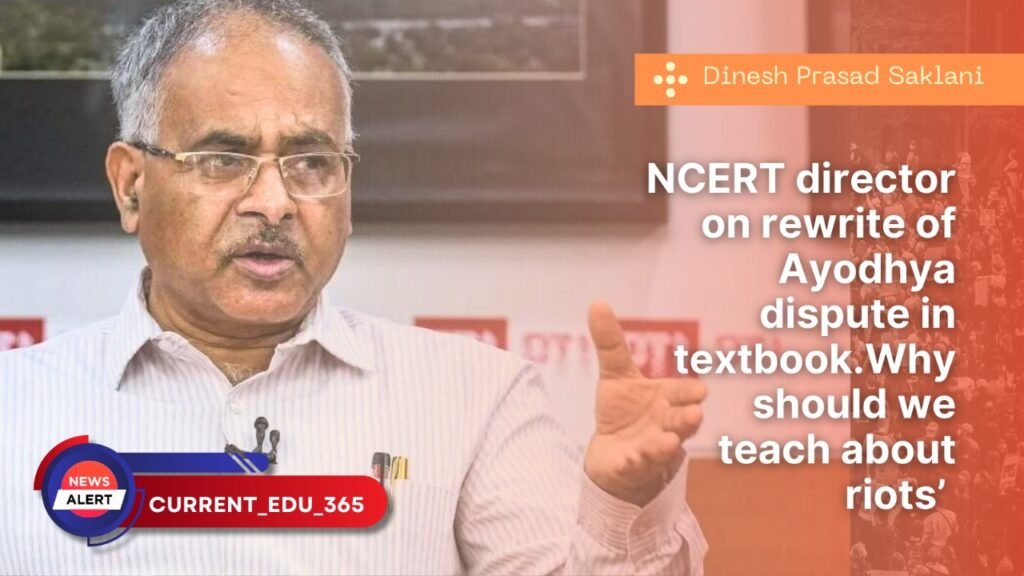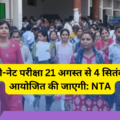
The revised Class 12 political science textbook does not mention the Babri masjid, but refers to it as a “three-domed structure”. The NCERT (National Council of Educational Research and Training) has also pruned the Ayodhya section from four to two pages and deleted details from the earlier version.
Director’s Response to Revision Criticism
Responding to news reports of tweaks in the newly revised National Curriculum for Educational Research and Training (NCERT) textbook, its director Dinesh Prasad Saklani said there were “no attempts to saffronise the curriculum” and all changes were based on “evidences and facts”.
In an interview with news agency PTI, Saklani said, “Why should we teach students about riots?”. The purpose of the textbook was not to “create violent, depressed citizens”, he said.
Criticism from Ayodhya Temple Chief Priest
The Chief Priest of Shri Ram Janmabhoomi Temple, Satyendra Das Maharaj, was dissatisfied with the omission of important events of the Ayodhya movement in the newly revised Class 12 Political Science textbook of the National Council of Educational Research and Training (NCERT), saying that there are several “shortcomings” in its presentation and it is “incomplete” in its narration.
“There are some shortcomings in the NCERT textbook about the Babri Masjid issue. They do not mention how the three-domed structure was removed on December 6, 1992; they are only starting to narrate the issue from November 9, 2019, when the Ayodhya verdict was given,” Satyendra Das Maharaj said, speaking to ANI.
Notably, NCERT left Babri Masjid out, referring to it only as a “three-dome structure” in its revised Class 12 Political Science textbook. The revision pertains to Chapter 8, ‘Recent Developments in Indian Politics’.
Justification for Content Modifications
Three months after the National Council of Educational Research and Training (NCERT) dropped references from multiple places of the Babri Masjid demolition and given added emphasis to the Ram Janmabhoomi Temple movement in its Class 12 political science textbook, NCERT Director Dinesh Saklani said changes were made by experts as books did not want to create “violent, depressed” citizens.
Satyendra Das Maharaj, the chief priest of Ayodhya’s Ram Janmabhoomi Temple, said on Monday that he was ‘dissatisfied’ with the commission of crucial events related to the Ayodhya movement in the newly revised Class 12 political science textbook of the National Council of Educational Research and Training (NCERT). According to him, there are some ‘shortcomings’ in the new NCERT textbook regarding the Babri Masjid issue. “They do not mention how the three-domed structure was removed on December 6, 1992, they are only starting to narrate the issue from November 9, 2019, when the Ayodhya verdict was given,” the chief priest told ANI on Sunday.
No need to teach about riots, demolition in schools, says NCERT chief after textbook revisions.
Rejecting accusations of saffronisation of school curriculum, NCERT’s director has said that references to Gujarat riots and Babri masjid demolition were modified in school textbooks because teaching about riots “can create violent and depressed citizens.” In an interaction with PTI editors at the agency’s headquarters here on Saturday, National Council of Educational Research and Training (NCERT) director Dinesh Prasad Saklani said the tweaks in textbooks are part of annual revision and should not be a subject of hue and cry.
Asked about references to Gujarat riots or Babri masjid demolition being tweaked in NCERT textbooks, Saklani said, “Why should we teach about riots in school textbooks? We want to create positive citizens not violent and depressed individuals”.



